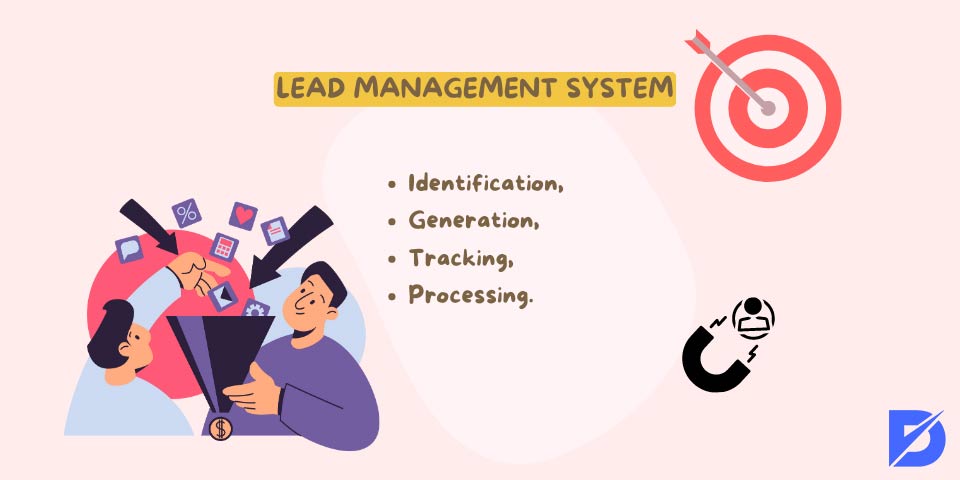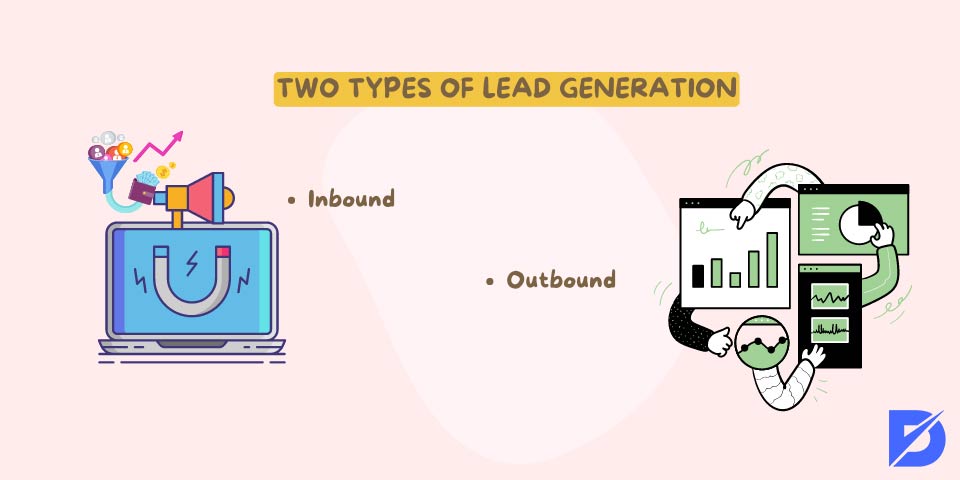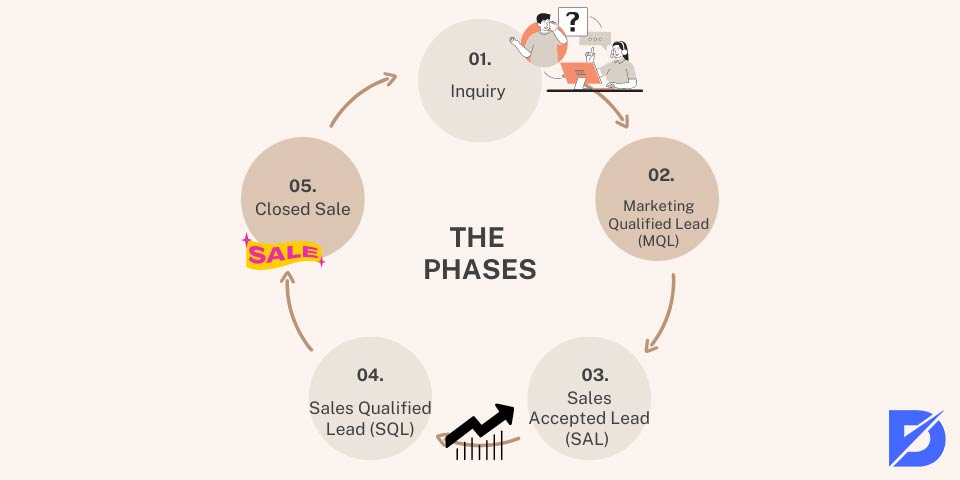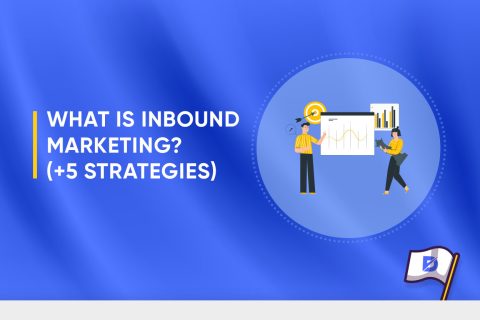Without
What happens to all the effort, time, and money spent in this case? It happens that you are about to waste precious time!
So, let’s briefly examine the lead management path, the vital processes, and how adopting this strategy will allow you to win “the loyalty” of newly acquired leads.
What Is Lead Management?
Lead management is the process of influencing potential customers, converting them into real customers, and making a sale, making them buy something. Especially since the relationship with the customers is at the forefront, it cannot be seen as just an advertising technique. It is much more than that. In the continuation of the article, we will share with you how the lead management process progresses and its important steps. By learning and following these steps carefully, you can better understand the importance of lead management. Let’s start, then.
The Lead Management Process
Lead management is “a sales process through which marketers identify, qualify, nurture and pass on leads to the sales team.”
Generally, the lead management system consists of four lead activities:

- Identification,
- Generation,
- Tracking,
- Processing.
Lead Generation
HubSpot defines lead generation as “the process of attracting and converting potential customers into someone who is interested in your company’s product or service.”
Lead generation begins with lead prospecting, where marketing teams use marketing tools and systems to organize and store leads.
But getting good leads isn’t that easy! It’s not like browsing the Yellow Pages and making random calls here and there. It takes time and dedication. According to a study by International Data Group, 61% of marketers revealed that generating high-quality leads is the biggest challenge they face.
There are various ways to generate quality leads: think, for example, of a blogger who provides engaging content in exchange for the contact information of his audience or the contact form of a site. In this case, when you fill out the form with your personal contact information, you automatically become a lead.
There are basically two types of lead generation strategies:

- Inbound – This includes activities such as blogging, on-page SEO optimization, guest blogging, social media updates, social media engagement, webinars, and premium content development, including eBooks, videos, infographics, and landing pages. Learn what is inbound marketing in detail.
- Outbound – This has to do with social media ads, PPC, banner ads, native direct mail ads, multimedia ads, email marketing, print ads, trade shows, and personal networking. Learn more about inbound vs outbound marketing.
Lead Tracking
Thanks to lead tracking, the marketing and sales team can easily collaborate to offer the best customer experience and get more qualified leads, which will inevitably lead to an increase in sales.
The monitoring of leads also allows those involved in marketing to follow the flow until the phase of natural “exit” from the sales pipeline. The process also includes monitoring the actions performed by each lead and qualifying it at the next stage of the phase to channel it towards sales.
With an effective lead management system, the marketing team can easily determine the leads’ source, the best outreach methods that generate conversions, and the best contact channels. Such channels have actually given the most satisfying answers.
Consequently, the marketer will understand which campaigns allow them to acquire quality leads. Once the leads are qualified and ready for the sales phase, they will be “passed” to the sales departments for final action.
These are generally the stages of the sales and marketing funnel. The phases are:

- Inquiry – Involves a visitor or general user whose interaction demonstrates a potential interest in one of the products or services.
- Marketing Qualified Lead (MQL) – At this point, the interaction of the lead with the marketing material provided indicates a sales potential.
- Sales Accepted Lead (SAL) – This is an MQL that the sales department has accepted as a potential lead.
- Sales Qualified Lead (SQL): Lead ready to sell.
- Closed Sale: The lead bought the service or product.
Lead Processing
Lead processing revolves around lead scoring and qualification, key processes that help filter, organize, and prioritize leads based on their potential value. Leads can have different behaviors. There are those cases that close immediately or those that take time to mature into a sales opportunity.
Under Jim Obermayer’s rule of 45, 45% of qualified leads will make a purchase within a year. Although this statement may seem too generalized and not reflected in every business context, it certainly provides us with important food for thought that can help marketing professionals to look at things from another perspective. By doing so, you will not (wrongly) expect your lead management system to provide you with “ready-to-sell” leads overnight.
Nourishment and Lead Score
Thanks to lead nurturing, the marketing team will build relationships even with potential customers who may not be ready to purchase your service or product. In this case, the marketing department will take care of the leads throughout the pipeline. Using a further technique, lead scoring allows the marketer to classify leads within the sales funnel.
A high score will prioritize high-level leads, giving the team a better understanding of where the prospect is in the sales cycle. Should the lead decide that qualifies them as ready for sale, the marketing team will take action.
Conclusion
You need leads to stay in business! The conclusion is perhaps a bit strong, but it certainly makes the idea. However, efficient lead management systems are required to grow leads from the source to the close of a sale. Therefore, you need a system that helps you map the entire customer journey, which allows you to generate, track, qualify, and evaluate your leads along the sales funnel.
However, some companies fail to allocate sufficient resources for lead qualification. As a result, marketers often resort to “obscure” methods that cost the business dearly, do “bad advertising,” and, above all, involve a waste of time and resources.
Frequently Asked Questions About
B2B lead generation includes attracting and collecting leads with potential from prospective customers. You can entreat leads in various ways. The meaning of B2B lead generation can change depending on your specific goals.
These five pillars of inbound marketing success are; personas, strategy and the buyer journey, analysis/improvement, maximizing customer value, and sustainable success. They are the guiding principles that should be used to govern your inbound marketing.
Inbound sales is a sales method prioritized on the challenges, needs, interests, and goals of individual purchasers. Instead of focusing on closing the sale asap, inbound salespeople work to meet consumers where they are and then guide — not push — them through the decision-making process.
Lead management is the professional way to process your relationship with potential customers to turn them into actual customers. It’s essential at some point.
The lead management process is making the potential customers into real ones and processing them with sales.





No comments to show.